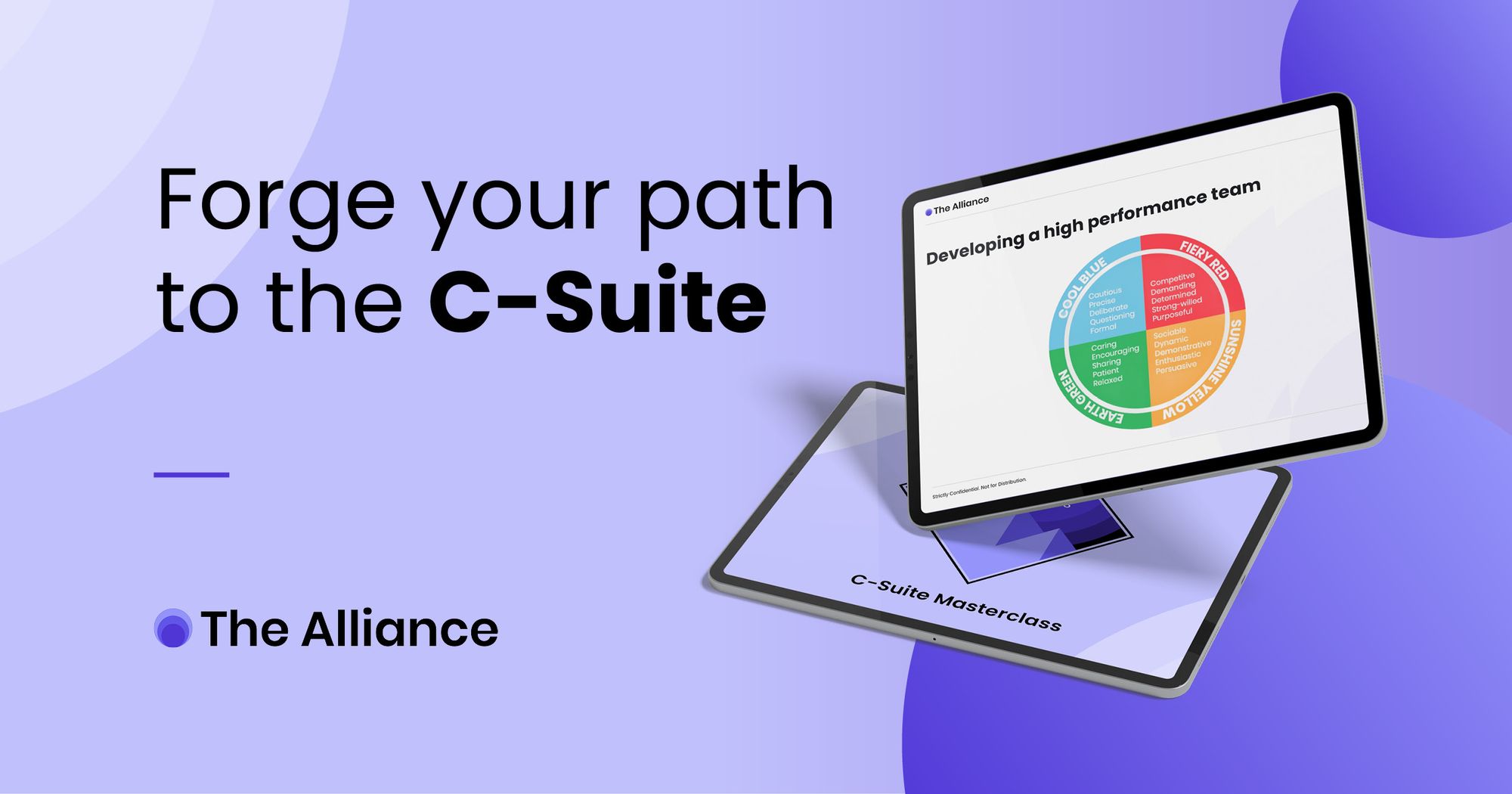The first three stages of the business lifecycle go something like this:
- Startup
- Growth
- Maturity
From that point on, things get a little shaky. The business can begin to decline as other, more agile competitors step up to the plate. Or, it can keep innovating. This rebirth stage sees the business transition to keep up with the changing market. There’s one other possible ending, though: acquisition. The business owner can cash out of the business, rather than stick around to see it through its next phase.
If you’re looking for the right competitive strategy for where your business is at, you’re probably in one of those first phases. Those are the ones almost every emerging business finds itself in.
Let’s take a look at which types of competitive strategies you should adopt at each stage of the cycle.
- How businesses win
- But what about..?
- Porter's generic strategies
- The company lifecycle (revisited)
- TL;DR
How businesses win
But first (!), let’s take a look at the different ways a business can become successful.
First, it wins more market share, and sells a larger number of units to a greater number of people across the total available market.
Second, rather than sell more units, it increases its profit margins per unit sold, while selling the same number of units. There are typically two ways it can do this:
- Cut costs and sell at the same price.
- Improve the product and charge a higher price. Costs remain constant.
All of these generate more profit for the company, which can then reinvest that capital. All other things being equal, a business that’s more profitable will win over the competition.
Let’s examine each option in a bit more detail.

Win more market share
Businesses that want to win more market share need products or services with broad market appeal.
This doesn’t have to mean “appealing to the masses”, although it might. A single product that appeals to everybody is great. But different products for different market segments might work even better.
Of course, it’s hard to create a single successful product. Creating multiple successful products demands more staff and more money. Businesses in the startup stage are usually wiser to stick with a single product.
Cut costs
A business that cuts its costs without negatively affecting the product makes more money from each unit it sells. It costs less to produce each unit (or to fulfill a service once). Less money out, same money in, more profit!
A business can cut its costs by switching, or negotiating better deals with, its suppliers or manufacturers. It can also cut its costs by becoming more efficient, or by employing economies of scale.
Improve the product
A business might not reduce its costs by working to offer a better product or service, but it will almost certainly be able to charge more. When you offer a great deal more value, customers will be willing to pay a great deal more. Same money out, more money in, more profit!
Even existing customers will be happy to pay more if you make it clear to them how much more value they’re getting from their product now than when they first came on board.
What to notice about all of these methods
All of the above methods flow into each other. Make more profit with any of the above methods, and you’ll be able to reinvest that profit into any of the others.
If you’re able to cut costs, you can reinvest your profits in improving your product, researching your market, and identifying competitor weaknesses. In turn, you’ll win more deals, start stealing market share from your competitors, and make even more money.
In turn, by winning more customers, you’ll learn more about what held them back from choosing you before. You’ll also learn what the final straw was that made them look to leave your competitor. All this helps inform your product development, and tells you where to direct your newfound capital.
In other words, there’s a positive feedback loop at play here. Just make some progress early, and you’ll find your business accelerating into the growth stage in no time.

But what about..?
By now, you should have questions. Because all that sounds neat and tidy, and you know nothing’s ever that easy.
When it comes to ways a business can generate more profit, we’re leaving out other things that matter too. Things like the quality of the business’ leadership, the quality of its strategic decision-making, and its ability to close deals.
But with the right people, such things should take care of themselves. And a business with more money can afford to hire better, more qualified people. So it should, in theory, win there too.
Ok. But what about winning market share? When do you ever get a bunch of “unclaimed” market share just sitting around, waiting for you to come along and win them? You’ll have to win market share from the competition if you’re to win them at all.
So, how do you get ahead enough to start generating more profit?
For that, you’ll need a competitive advantage. That’s where frameworks like the VRIO framework, or Porter’s generic strategies come in.
Porter’s generic strategies
First, a primer on Porter’s generic strategies.
Michael Porter proposed three distinct competitive strategies:
- Cost leadership.
- Differentiation leadership.
- Focus leadership.
Let’s examine those more closely.
Porter’s generic strategies explained
Cost leadership
A business that cuts costs while keeping prices the same can make more profit. It can then reinvest that profit into its products, people, and processes. This creates a positive feedback loop that accelerates the business’ growth, widening the gap between it and its closest competitors.
Or, a business can look to pass its cost savings on to its customers, lowering its prices. Competing on price is rarely the best strategy for a business, as prices can only drop so close to zero before you’re out of business.
While you might attract more people with your lower prices, there are some things to consider:
- Does your product or service have broad enough appeal to actually attract more customers even if the price is lower?s
- Is your price a real reason you’re losing deals?
- Will the uplift in customer numbers offset the drop in prices?
- Are the customers you’d attract with lower prices the kind you’d want?
Remember, there’s no limit to how much you can increase your prices. You can offer ever-increasing value to your customers and continue charging more for it. In this direction, you’re limited only by your creativity and willingness to provide value.
Try to win by being the cheapest, and you cheapen your product too. For some businesses this is the right strategy. For most, it’s not.

Differentiation leadership
Differentiation leadership is where your product or service does a few select things very well. Much better than your competitors. You’ve looked at similar products, uncovered where your product is strongest, and doubled down on those strengths. You’ve figured out how to make your product different, so it can stand on its own amongst other high value products.
By doing a few things very well, your product becomes very good at solving very particular customer needs. The customers who want these needs met more than any others will favor your product over your competitors. Some of those competitors might even have you beat in other areas. But for your select cohort, your product solves their unique problems the best. So long as that doesn’t change, you’ll always be their first choice.
Focus leadership
Focus leadership comes down to focusing on one, small niche of customers to create what's called a niche competitive advantage. A lot of research will likely have gone into finding and defining this customer segment. From the ground up, you’re able to build a product or service that caters to every need of this small niche. You understand them, and your product caters to them, better than any of your competitors.
By virtue of being a small niche, broad market appeal is not what you’re aiming for. Everything from your pricing, to your feature set, and your brand messaging, all of these are geared towards selling your target market on your product.
You might think this sounds quite a lot like differentiation. The difference between this and differentiation is that it can apply to both cost and differentiation. If price is a core need for your customers, you’ll have to incorporate that into your product or service.
In fact, Porter's differentiation focus strategy is the same thing as a niche differentiation strategy.

The company lifecycle (revisited)
So (big drum roll) what does any of this have to do with the company lifecycle?
At different stages of the lifecycle, a business has different challenges and circumstances. It has more or less cash readily available to reinvest. It has a greater or lesser number of talented staff on hand to push smart new ideas.
And, most importantly, businesses at different stages of the company lifecycle can have more or less success with each of the competitive strategies we outlined above. That’s thanks to the unique things about those strategies.

The best competitive strategy for a startup
Here are some of the hallmarks of a startup 🌳.
- Hasn’t been in business long (months to years).
- Low sales.
- Negative profit (operating at a loss).
- Low efficiency (relatively unable to generate sales with its available capital).
The business is at its most fragile during the startup stage. Most businesses don’t survive! Product market fit does not yet exist, and there’s not much cash since you’re not yet profitable.
Running at a loss, startups are at risk of losing the key people they’ve invested so much of their scarce capital in. Your employees will learn lots quickly, and you’ll have to underpay them. Your best employees are the ones you’ll rely on most for growth, but they’re also the ones most likely to leave in search of higher paying opportunities once they’ve learned enough to move on.
However, a business is also at its most agile during this stage. Risk is inherent, so startups have little to lose, and benefit from a “move fast and break things” mentality. Risk is high anyway, so there’s little downside to trying bold new things and learning from the outcomes.
So what should your priority be as a startup? And what strategy is best to pursue at this stage?
• Suggested strategy: Niche competitive advantage (focus OR differentiation).
Finding your product-market fit should be your priority. That includes establishing a customer base. When you do, you’ll start generating enough cash to reward your staff and attract strong new talent. This sows the seeds of true growth, as you’ll have more money and more staff around. You can use both to further develop your products and grow your business.
As for strategies, a focused approach works best in the beginning for most. This can’t be a blanket recommendation, as there are always exceptions in the messy world of business. But as a rule, it holds.
Most startups barely have enough cash to keep going. So it makes sense to nail a single product or service first. Make it the best it can possibly be for a small group of people (making it the best it can possibly be for everyone is beyond your scope at this point).
By making it so good for a select group, it’s likely very valuable to them. This is good, as it means they’ll pay top dollar to use it. That’s good, because it means you’ll start generating serious cash once your product starts to sell.
The best competitive strategy for a growth-stage company
Here are some of the hallmarks of a growth-stage company 📈:
- Usually been in business for at least a year.
- Higher sales.
- Higher profits, positive turnover.
- Greater efficiency (better able to convert available capital into more sales).
By the time you’ve reached the growth phase, you’ve found your product-market fit. There is demand for what you do. At this point, you’re operating at a profit. This is the time to strategically reinvest every bit of profit you make back into the business, so it can scale.
So what should your priority and strategy be as a growth-stage company?
• Suggested competitive strategy: Niche competitive advantage (focus AND differentiation).
You have more money at your disposal at this stage, so investing in new, skilled people is key. Sure, continue investing in product development and better tools and software. But a full marketing team is a must at this stage. A skilled marketing team can handle your key focus for the growth-stage: competitive positioning.
As you near the end of the growth stage, growth will slow as you step up to the plate against key competitors. Knowing these competitors and how you’ll position yourself to beat them is key.
As for your competitive strategy, it’s important to keep focusing on the niche target market you’re already winning over. Continued investment in your product helps keep existing customers around, while improved positioning and marketing puts you in the best position to win new customers.
The best competitive strategy for a business at maturity
Here are some key markers of a business that has reached maturity 👨🦳:
- Usually been in business for at least five years.
- Growth has begun to slow.
- Costs have begun to fall.
- Has been profitable, year after year, for a while.
- Even greater efficiency versus the growth stage (even better able to convert available capital into more sales).
A business that has reached maturity has a key, new advantage. It’s large enough that it is able to begin employing economies of scale. Fulfilling services on a larger scale, putting in orders for manufactured materials at bulk sizes, being able to commit to longer term deals with suppliers … all of these things help a business cut costs.
And with lower costs, you can begin pursuing the elusive cost leadership strategy.
• Suggested competitive advantage: cost advantage. Broader focus possible.
For most businesses that reach maturity, the next stage is decline. To guard against that, you’ll need to stay on top of market trends and be very aware of changing customer needs.
For that reason, your suggested focus at this stage is on establishing yourself for the long term. How can you make sure you’re still the in-demand product in five or ten years? How is the market shifting, and how might this affect the ways you offer and deliver your products and services to make sure you remain competitive?
These are the kinds of questions you’ll need answers to if you want a sustained competitive advantage instead of a temporary competitive advantage.
Thankfully, your strategic horizons have broadened. You’re now large enough to lower your costs, so you can begin using these cost savings strategically. You can pass them on to your customers by charging lower prices. Or, you can charge the same prices and reinvest the additional profit.
One smart way of investing this additional profit would be in advisors and experts who can help you navigate the business environment. They’ll be expensive, but if they keep you in business, they’re worth every cent.
Now is also a good time to start diversifying. If you’ve been nailing a particular niche market segment for a while, you can start to develop a broader focus, aiming to serve a greater total number of customers.
TL;DR
- Businesses win by either appealing to a greater number of customers with the same products, or by increasing profit margins while selling to the same number of customers (or both). 📈
- Porter’s Generic Strategies (cost leadership, differentiation leadership, and focus leadership), roughly describe ways businesses can succeed. ♟️
- Businesses at each of the first stages of the company lifecycle (startup, growth, maturity), have different circumstances and opportunities. 👪
- Startups should focus on achieving product market fit quickly, while focusing on a niche market. 🤏
- Businesses in the growth phase should focus on beginning to position themselves competitively in the marketplace, learning how to differentiate their product effectively. 🌳
- Businesses that reach maturity should start securing themselves for the long-term, and can begin employing economies of scale to achieve cost leadership in their industry. They can then reinvest in diversifying their product portfolio and hedging risk. 👨🦳
New or budding C-suite member who needs strategy training?

Most newcomers to the C-suite don't feel prepared.
That's because they don't know how to:
- Steer their psychology to take care of their mental health, eliminate imposter syndrome, and finally achieve work-life balance.
- Quickly establish a company-wide vision and framework for developing and implementing a winning strategy.
- Deftly handle cultural differences to maximize team togetherness.
The C-Suite Masterclass will teach you to do all this, plus a load more.
Click the banner below for more info.
See you inside. 🫡







.png?v=56e5ac1685)